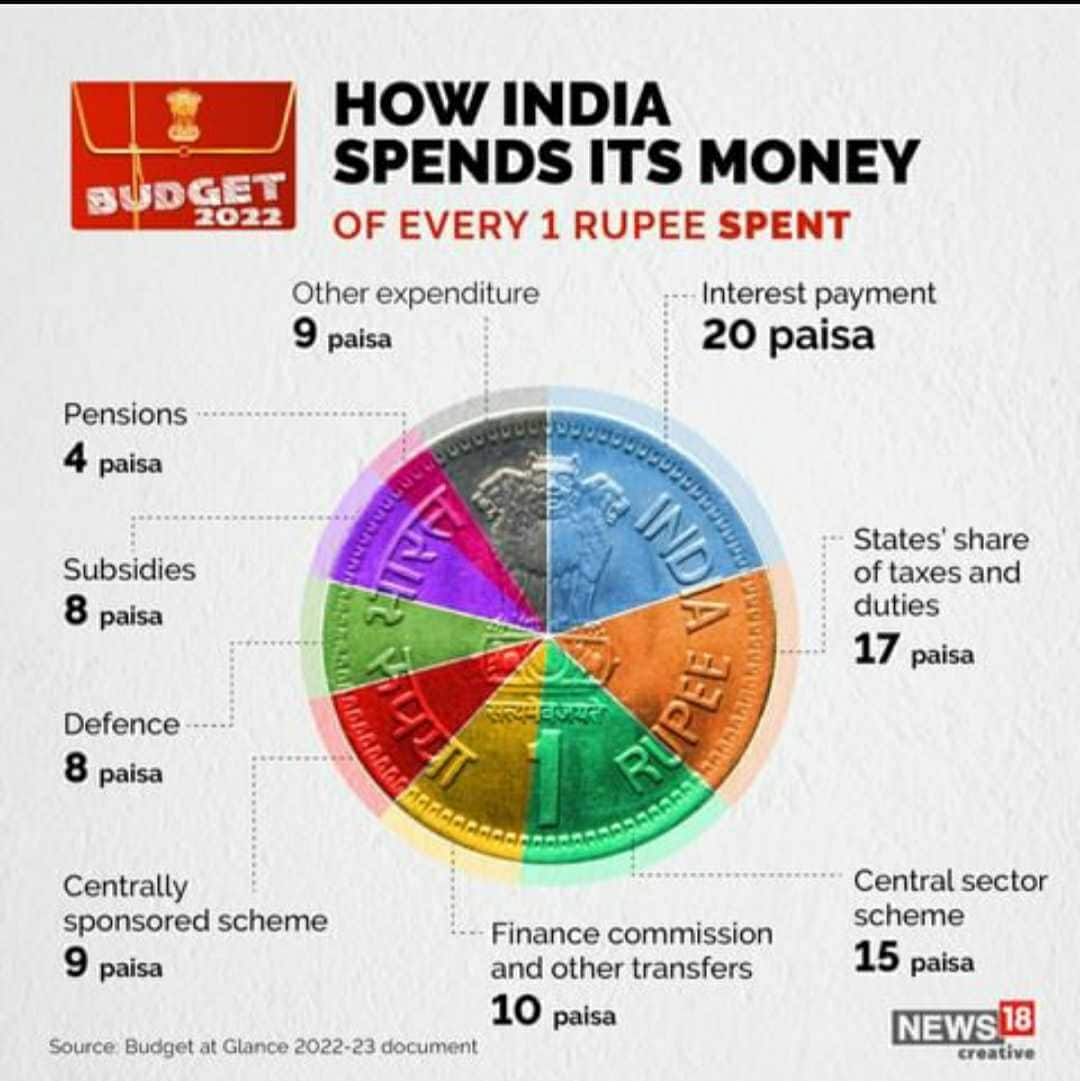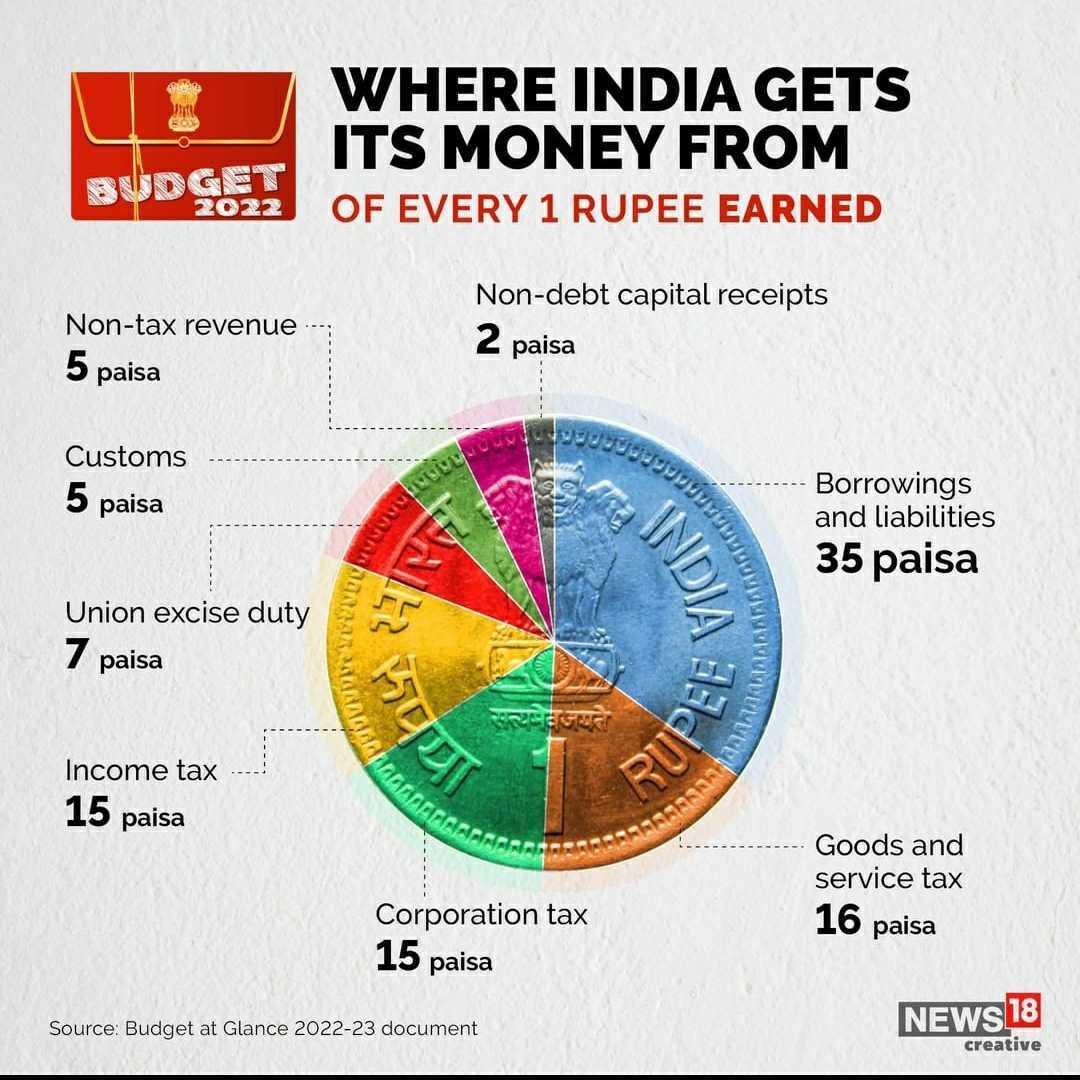



The share of taxes in the total receipts of the government in 2022-23 has been estimated at a higher 58 percent from 53 percent in the Budget estimates for 2021-22.
Much of this increase has been attributed to a higher share of direct taxes— taxes on personal income and corporate income.
Yet, government borrowing to finance the fiscal deficit is set to climb, as it has committed to spending more on various schemes as well as for augmenting infrastructure to pump the economy and crowd in private investment.
Budget documents show that the government expects direct taxes to contribute 30 paise in every rupee of receipt against 27 paise in 2021-22.
Also read: Budget 2022| FM Niramala Sitharaman blends welfare needs with reformist intent
The contribution of indirect taxes is also expected to rise to 28 paise in the estimates for 2022-23 from 26 paise in the Budget estimates for the current year.
Click Here To Read All Live Updates on Budget 2022
Borrowings will contribute an estimated 35 paise in every rupee of receipt of the government in the new fiscal year against 36 paise in the current year.

The Budget has projected that gross tax revenues to rise to Rs 27.58 lakh crore in 2022-23, up 24.4 percent from the estimates for 2021-22 but a more modest 9.6 percent from the revised estimates.
Many economy watchers describe the tax projections for the next fiscal year as conservative, just like the estimates in the Budget for 2021-22.
Also read: Budget 2022 | FM pegs fiscal deficit at 6.4% of GDP for FY23
Revised estimates for revenue collection for 2021-22 show that the tax collections will be much higher than was estimated in the Budget.
Overall, gross tax revenues for 2021-22 are expected to be 13 percent higher than estimated in the Budget, with collections from customs duty as much as 39 percent higher.

In all likelihood, the estimates of tax revenues for 2022-23 would be revised upwards, assuming economic recovery and tax collections trends are sustained through the next fiscal year.
The Budget documents show that collections of all major taxes other than excise are expected to rise 13-16 percent from the revised estimates of 2021-22.
The collection of excise duty has been retained at the 2021-22 estimate levels, as the incidence of the tax on petrol and diesel was cut in early November 2021.
The Budget has estimated collections from corporate tax at Rs 7.2 lakh crore and from personal income tax at Rs 7 lakh crore for 2022-23. Collections from central goods and services tax (CGST) and GST compensation cess was estimated at Rs 7.8 lakh crore.
Also read: Budget 2022 at a glance–your definitive, quick guide to one and a half hours of FM speech
Total borrowings have been projected at Rs 16.61 lakh crore, up 10.2 percent from the Budget estimates for 2021-22 and 4.4 percent from the revised estimates. The share of market borrowings against government securities and treasury bills is expected to be 70 percent of the total borrowings, up from 55 percent in the revised estimates.
The share of borrowings from small savings is estimated to decline to 26 percent from the revised estimate of 37 percent in 2021-22. The government had increased its borrowing from small savings sharply and lowered the sale of G-Secs and T-bills during the current year, as inflows into small savings schemes soared.
The contribution of non-debt capital receipts that include proceeds from disinvestment has been pruned. Against 5 paise in every rupee of receipt estimated in the Union Budget for 2021-22, it is expected to be 2 paise in the next fiscal year.
The government has lowered its estimate of disinvestment proceeds from Rs 1.75 lakh crore in the Budget estimates of 2021-22 to Rs 65,000 crore for the next fiscal.
Discover the latest Business News, Sensex, and Nifty updates. Obtain Personal Finance insights, tax queries, and expert opinions on Moneycontrol or download the Moneycontrol App to stay updated!
Find the best of Al News in one place, specially curated for you every weekend.
Stay on top of the latest tech trends and biggest startup news.